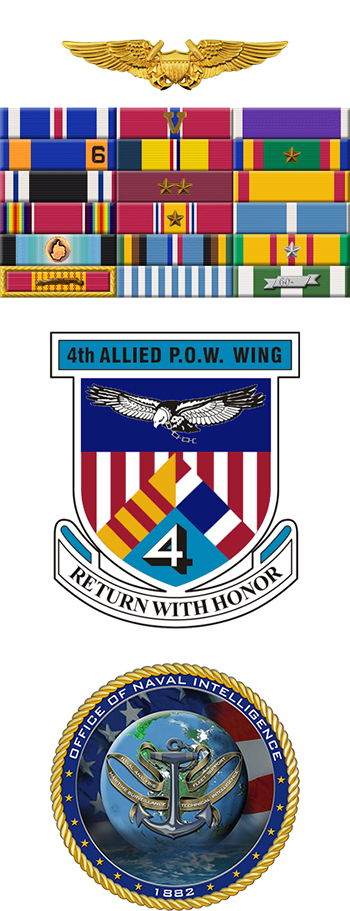
|
John G. "Jack" Graf |
 |
|||
| Rank, Service | ||||
Commander O-5, U.S. Navy |
||||
| Veteran of: | ||||
|
||||
| Tribute: | ||||
Jack Graf was born on October 20, 1927, in Los Angeles, California. He enlisted in the U.S. Navy on July 7, 1945, and completed Basic Training at NTS San Diego, California, in October 1945. He then attended Naval Photography School at NAS Pensacola, Florida, from November 1945 to March 1946, followed by service with Meteorological Squadron ONE (VPM-1) at NAS Agana, Guam, from April 1946 to July 1947. Petty Officer Graf served with Photographic Squadron ONE (VPP-1) at NAS Miramar, California, from October 1947 to March 1948, and then Patrol Squadron FOUR (VP-4) at Whidbey Island, Washington, from March to September 1948. His next assignment was as a photographer back at VPP-1 at NAS Miramar from September to October 1948, followed by service with Naval Air Missile Test Center (NAMTC) at Point Mugu, California, from November 1948 to October 1951. Petty Officer Graf served with Utility Squadron ONE (VU-1) at Pearl Harbor, Hawaii, from November 1951 to August 1954, and then with Pacific Fleet Combat Camera Group (PFCCG) at NAS North Island, San Diego, California, from September to November 1954. His next assignment was as a photographer with Pacific Fleet Combat Camera Group Far East Unit from November 1954 to April 1955, followed by service back at PFCCG at NAS North Island, California, from May to July 1955. He served aboard, and was Plank Owner of, the aircraft carrier USS Bon Homme Richard (CVA-31) from September 1955 to September 1956, and then served at NAS Hutchinson, Kansas, from October 1956 to May 1957. He attended training for service in Antarctica with the Antarctic Support Activity, Davisville, Rhode Island, from June to October 1957, and then served at Little America Station, Antarctica, from October 1957 to September 1958. During this time he was Wintered Over in Antarctica, and he was commissioned an Ensign in the Navy while stationed there on July 2, 1958, having been promoted through the enlisted ranks to Chief Petty Officer (E-7) in 1956. Ensign Graf returned to Antarctic Support Activity, Davisville, from September to October 1958, and then served at Naval Schools Command in Newport, Rhode Island, from October 1958 to February 1959. He next attended Naval Intelligence School in Washington, D.C., from February to October 1959, followed by service with Heavy Attack Squadron NINE (VAH-9) at NAS Sanford, Florida, from November 1959 to March 1963. During this time he completed A3D Skywarrior All Weather Attack Delivery Bombardier Navigator training at NAS Sanford in November 1961. LT Graf served at Naval Photographic Interpretation Center, Washington, D.C., from April 1963 to February 1966, and then at Naval Amphibious Base, Coronado, California, from March to July 1966. His next assignment was as a Naval Intelligence Liaison Officer with U.S. Military Assistance Command Vietnam in Saigon, South Vietnam, from July 1966 to June 1967, and during this time he was forced to take the controls of the O-1 Bird Dog he was an observer on when the pilot was killed on January 21, 1967, making a safe "crash" landing with no prior pilot training. LCDR Graf served with Fleet Intelligence Center Pacific in Pearl Harbor, Hawaii, from July 1967 to May 1969, and then as a Naval Intelligence Liaison Officer with the Naval Support Activity Detachment at Cat Lo Naval Base, South Vietnam from May 1969 until he was forced to eject from his stricken OV-1 Mohawk while flying as an Observer over South Vietnam on November 15, 1969. He was immediately captured and taken as a Prisoner of War, and died in captivity during an escape attempt on February 15, 1970. He was officially listed as Missing in Action until being declared dead on February 1, 1978, and he was promoted to Commander during this time. His remains have never been returned to the United States, and due to flooding of a river bank where it is believed he was buried in Vietnam, his remains may be lost forever. |
||||
|
||||

